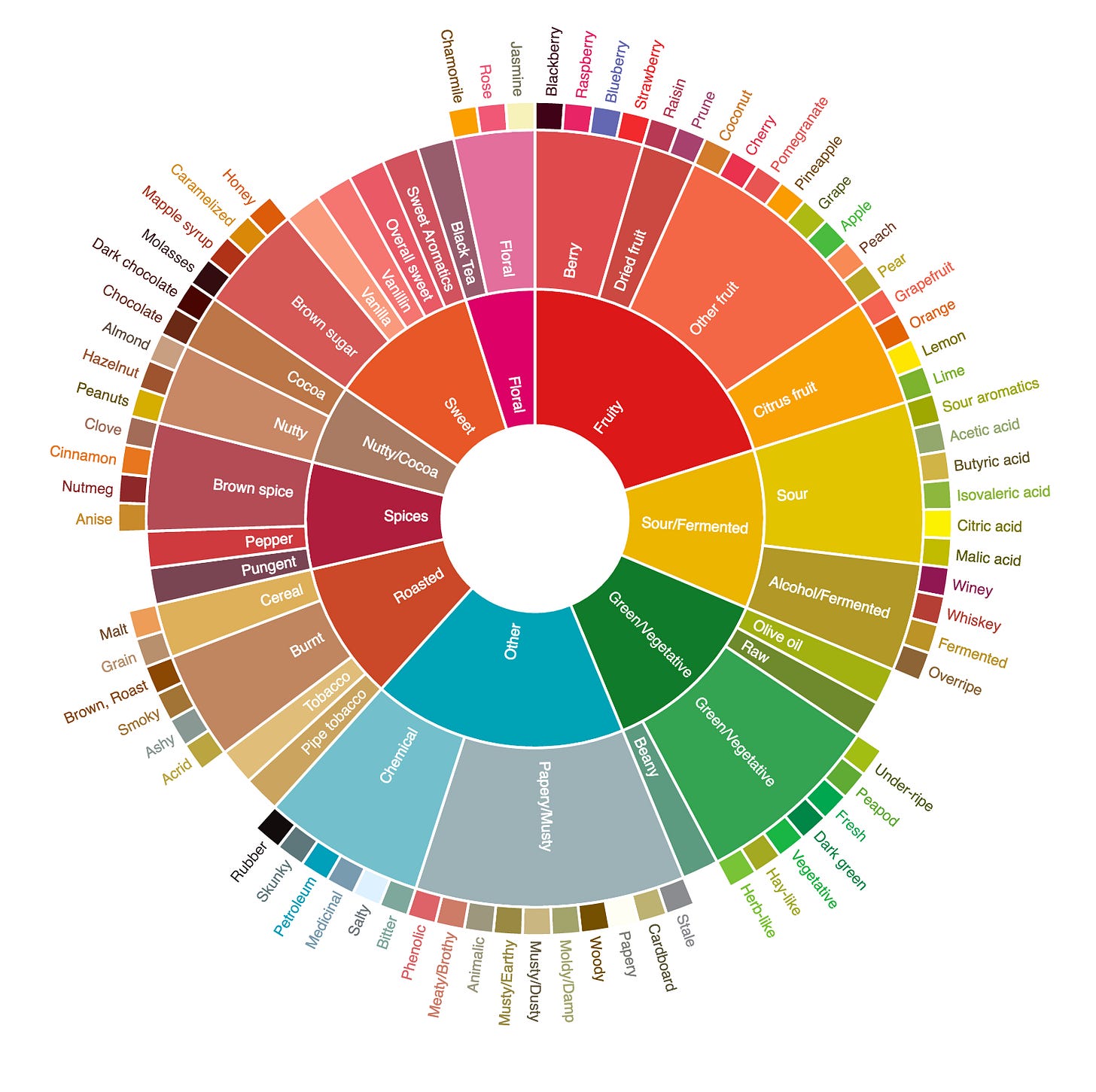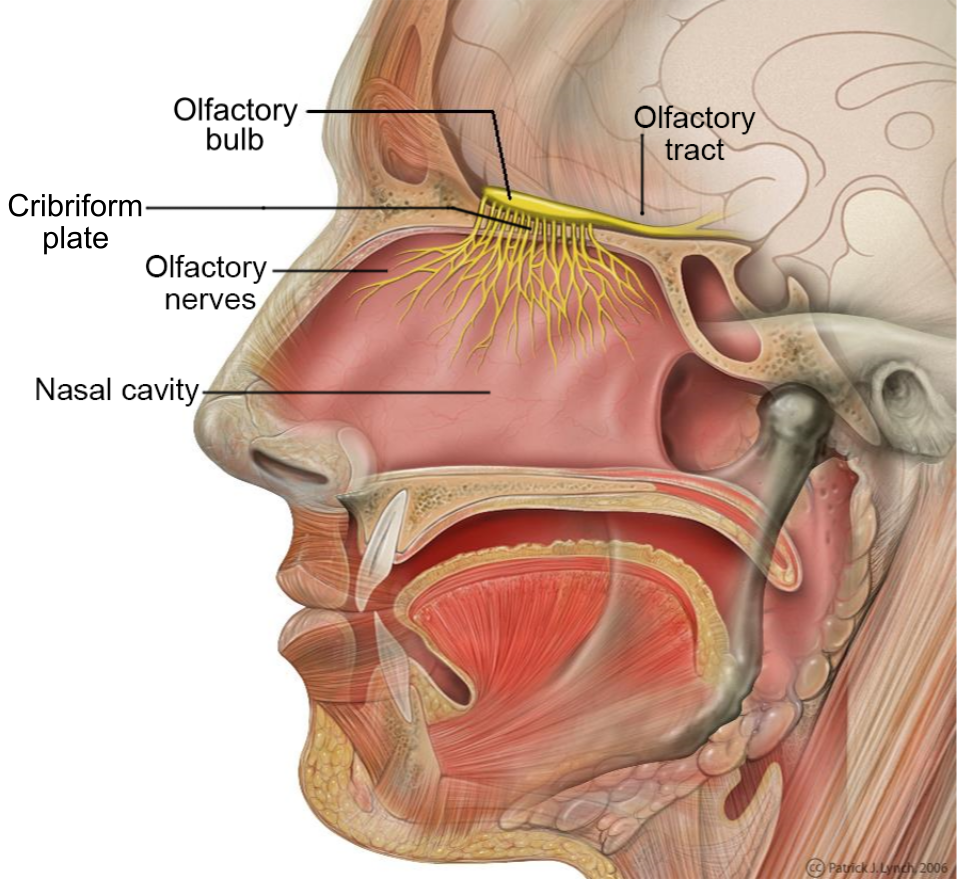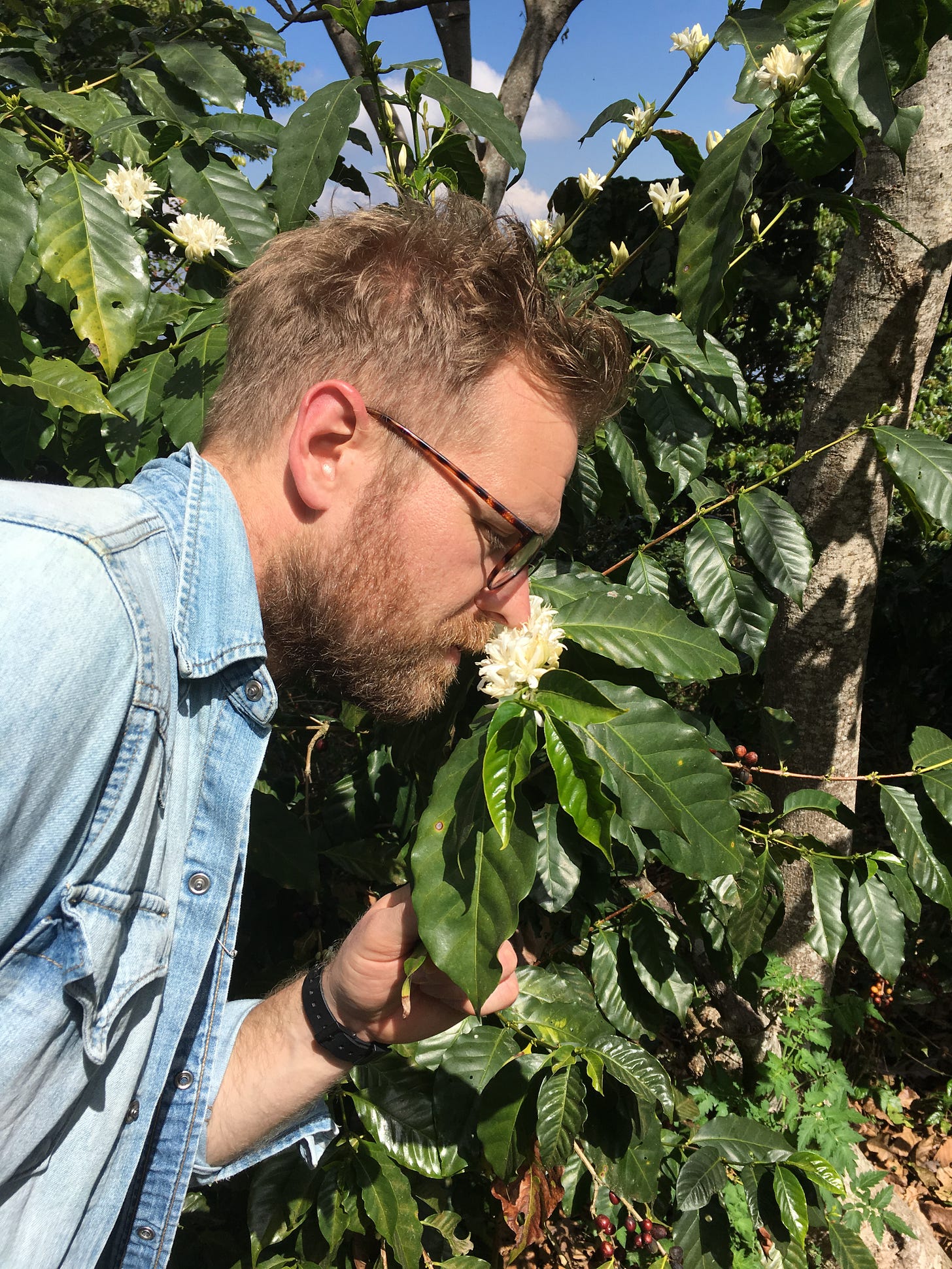Ever since I can remember I have been obsessed with smells.
It has become a running joke in our house to get Dad to sniff out any problems. I am chief spoilage detector, and perishable items have become my superpower. Over time, I have also observed that my offspring have started to develop the traits of becoming considerably accomplished little sniffers.
I often question:
Is this learned behaviour or evolution at play?
Whatever it may be, we smell everything.
Our sense of smell is an incredible tool, we use it daily to interact with the world around us, we use it to assess almost every situation we are confronted with, and evolution has been kind enough to allow us the ability to assess the slightest change in our environment in order for us to detect anything that could potentially end our time on this planet.
‘Obviously’, an essential element for the survival of our species but what I am really interested in is sniffing out the more complex of life’s aromas because, in my experience, that’s where the flavour is at.
Aroma plays a significant role in how we perceive flavour and our sense of taste and smell work together in creating our overall flavour experiences. While taste primarily detects basic qualities such as sweet, sour, salty, bitter, and umami, it is the combination of taste and smell that gives rise to the complex flavours we experience.
When we consume food or drink, volatile compounds, which are responsible for the aroma, are released and travel to the back of the nasal cavity. These compounds interact with our olfactory receptors in the olfactory epithelium, triggering a sensory response which sends signals to our brain.
The brain then integrates the information received from the taste buds on the tongue and the olfactory receptors in the nose, combining taste and aroma to create the perception of flavour. The brain associates specific aromas with particular taste sensations, resulting in a more diverse and intricate flavour experience.
Taste + Smell = Flavour
Aromas then enhance our perception of taste by providing additional sensory information that complements these basic taste qualities. For example, the aroma of a ripe strawberry can enhance the perception of sweetness, while the aroma of roasted coffee can in fact intensify the perception of bitterness. Aromas can also create complex flavour profiles by adding layers of nuance and complexity to our overall taste experience.
This is extremely apparent in coffee which is one of the most complex food groups in its category and this is due to a very large production of volatile aromatic compounds created through the multiple chemical reactions coffee goes through from plant to cup.
Now this all sounds pretty complex, I get that, and the majority of us will go about our day oblivious to the aromas around us, however, if you stop for a second and breathe in your surroundings you will be surprised at just how full the world is.
conscious sniffing is something I have turned into a daily habit and as I sit here typing this article in the lush green hills of Northern Portugal with the window slightly ajar, last night’s rain and this morning’s mist have mingled with the earth and are throwing off a cacophony of scents so fragrant it would be with the deepest regret not to breathe it in.
Flavour Notes.
I have often wondered what helps sell a bag of roasted coffee. What motivates us to choose one bag over the next? Especially when there are so many options to choose from.
One question I like to ask when delivering sensory sessions is:
Do flavour notes play a significant role in the decision-making when purchasing coffee?
A high percentage of my students will answer YES…
This will then often expand to the notes that entice the majority of folk to complete their transaction. There are many, but I bet you can guess the notes that seem to be the trend.
I will list the top 5 for reference:
Chocolate.
Caramel.
Toffee
Nuts (most nuts but mainly Hazelnut)
Honey
I find this incredibly interesting and I kind of understand why this is the case and as always I want to dive a little deeper into the why.
Another evolutionary factor is the desire for humans to want to consume vast amounts of sweet things. Not knowing where your next meal is coming from would certainly give you the necessary impetus to fill your cheeks with as many sugar-laden goodies as humanly possible and you would pick the sweet bush bare if you so happened to stumble upon one. However, The preference for sweet-tasting things in humans can be attributed to several defining factors:
Nutritional Value: As mentioned above, sweetness is often associated with the presence of sugars, which are a source of readily available energy. Throughout human history, finding and consuming sweet foods, such as ripe fruits or honey, provided an important source of calories and nutrients. This preference for sweetness may have conferred a survival advantage by ensuring an adequate energy supply.
Maternal Preference: Humans are born with a natural preference for sweetness. Breast milk, which is a primary source of nutrition for infants, has a naturally sweet taste due to the presence of lactose. This innate preference for sweetness may have developed to encourage infants to consume breast milk and ensure their survival.
Taste Reward System: Sweet taste triggers the release of pleasure-inducing neurotransmitters, such as dopamine, in the brain. This activation of the brain's reward system reinforces the desire for sweet foods and contributes to the pleasurable experience associated with consuming them.
Cultural and Social Factors: Cultural and social factors also influence our preference for sweetness. Sweet foods are often associated with celebrations, rewards, and indulgence. They are commonly used in desserts, confectionery, and other treats that are enjoyed in social gatherings, which further enhances the positive associations with sweetness.
Safety: although not the primary reason for humans to consume sweet things, it would be foolish not to mention that the majority of sugar-producing food items would be deemed safe to consume, further conditioning our desire for the sweeter things in life.
Sweet = safe - Bitter = poison.
Back to flavour notes.
I have tried to understand the myriad of reasons why we use flavour notes to communicate coffee, I think the majority of the time we have used them as a great marketing tool but I often wonder if this can be detrimental in the longer term.
Individual taste is very subjective and I believe the majority of people are slightly disappointed and let down when the flavour notes described on the bag do not live up to expectations. This can lead to distrust but even worse can lead consumers to play it safe and unfortunately this happens more often than not.
Promoting flavours that are slightly obscure can have an undesirable impact on the sale of specific coffees, however, I see them used more and more in coffee marketing. This can be confusing and the basic fact is, if you have not had the pleasure of tasting a certain food item then how the hell will you interpret this in a flavour evaluation?
the jury has always been out for me on whether flavour notes add any real value for the consumer. I don’t believe that many people like to be confused when making purchasing decisions.
So, the important question has to be:
Are flavour notes important?
I believe they are…
However, this will all depend on whether we have the necessary knowledge and skill to be able to evaluate and communicate them effectively.
Coffee is complex and the very recent development of looking at coffee as a quality product is something that demands flavour notes to play a significant role in the way we communicate this quality. Desirable flavours add value, complex flavours add value, and nuance is something we strive to detect. The more complex the beverage the more challenging it is for our receptors to process this information leading to a higher sensory experience. However, if we do not associate coffee with certain types of flavour characteristics this can lead to confusion for the consumer and ultimately have a negative impact.
I have witnessed this first-hand, who wants to drink a coffee that tastes like blackcurrant and rooibos tea? I do, but I work in the industry of assessing quality and I have figured out that this takes a good amount of effort to communicate the reasons why and this is where we fail the majority of the time.
So what can we do?
Be patient, learn from our mistakes, and develop a systematic way of communicating quality that can be standardised.
The specialty coffee industry is currently going through a very rapid growth phase, we have more coffee roasters than ever and we have more innovation taking place within coffee processing, both elements combined are forcing the industry to quickly find a way to communicate these changes and this will take time.
I don’t think removing tasting notes will achieve a great deal but I think we need to be mindful of what information we put on our bags. I would like to see the adoption of an adequate sensory lexicon that is easy to understand and can be shared wider than just the industry. I would love to see more standardised terminology used throughout the industry and I would like to see more emphasis applied to research. After all, the more we learn the more we can communicate effectively.
I want to see us try our hardest to not apply a flavour note to a bag just because it sounds exotic or fancy.
If you can’t quite get what the flavour is, even if it is on the tip of your tongue, don’t put it on.
Do the coffee justice and don’t hinder its potential sale.
I am excited that coffee is moving in this direction but if we want to attract a larger audience to the table of quality appreciation let’s try our best not to scare them away.
Maybe flavour notes are not the most effective way of communicating quality but then again, maybe they are.
Your thoughts on the matter are always much appreciated.
Cheers
Burts x









This reminds me of James Hoffmann's video on the subject, specifically that flavor notes are tangential ways of communicating certain characteristics to the consumer. His guidance was to interpret fruity notes as more acidic and a lighter roast, and more mellow/nutty flavors as mild acidity and a medium roast. It's been a helpful shorthand for me when I'm looking to buy coffee I haven't tried before.
I think it's also extremely important to remember that flavor can be affected by grind and grind quality, so you may not be tasting the same flavor notes as the bag indicates because you probably haven't dialed in the coffee.
Another brilliant and thought provoking piece, David. Like many, I have a mixed view on flavour notes. We have to start somewhere, right?
Prior to my own evolution in producing a filter brew to my taste, I'd buy coffee with 'fascinating' flavour notes. Seldom did I taste those. If I think back, the one coffee that did blow my mind a tad, was one from Yemen, which really did have the spicy notes suggested. However, my own research helped me to understand what was being suggested in the brew, from those descriptors. Still think they're being misused by some roasters, though.
I make cakes for a living. Counterintuitively, I prefer savoury to sweet. Give me a kilo of crisps and I'm yer man. Give me a kilo of cake and i'll likely give you all but one bite, back! So this morning I was delivering cake to one of my cafe clients and was asked to smell a bag of coffee. I'd tasted it the previous week and it was delicious. For the record, a Nicaraguan Extended Fermentation Natural, tasting notes Tropical Fruit, Coconut, Cream. To me, a nicely acidic, juicy, rich mouthfeel. It was exactly that. Now, could be my brain, or an imprinted memory, but when I stuck my schnozz in that bag, I was hit by pineapple...an extraordinary thing from a bag of roasted beans...and that's where the education starts, for all those who have been sold short on their bean purchases, by perhaps not smelling, but certainly not being in a position to extract those notes, or sweetness, or acidity, or mouthfeel, due to lack of knowledge/grinder/technique.
Coffee IS complex and distilling those amazing beans down to a few subjective tasting notes, doesn't cut it. We owe customers the education and the enlightenment will follow...